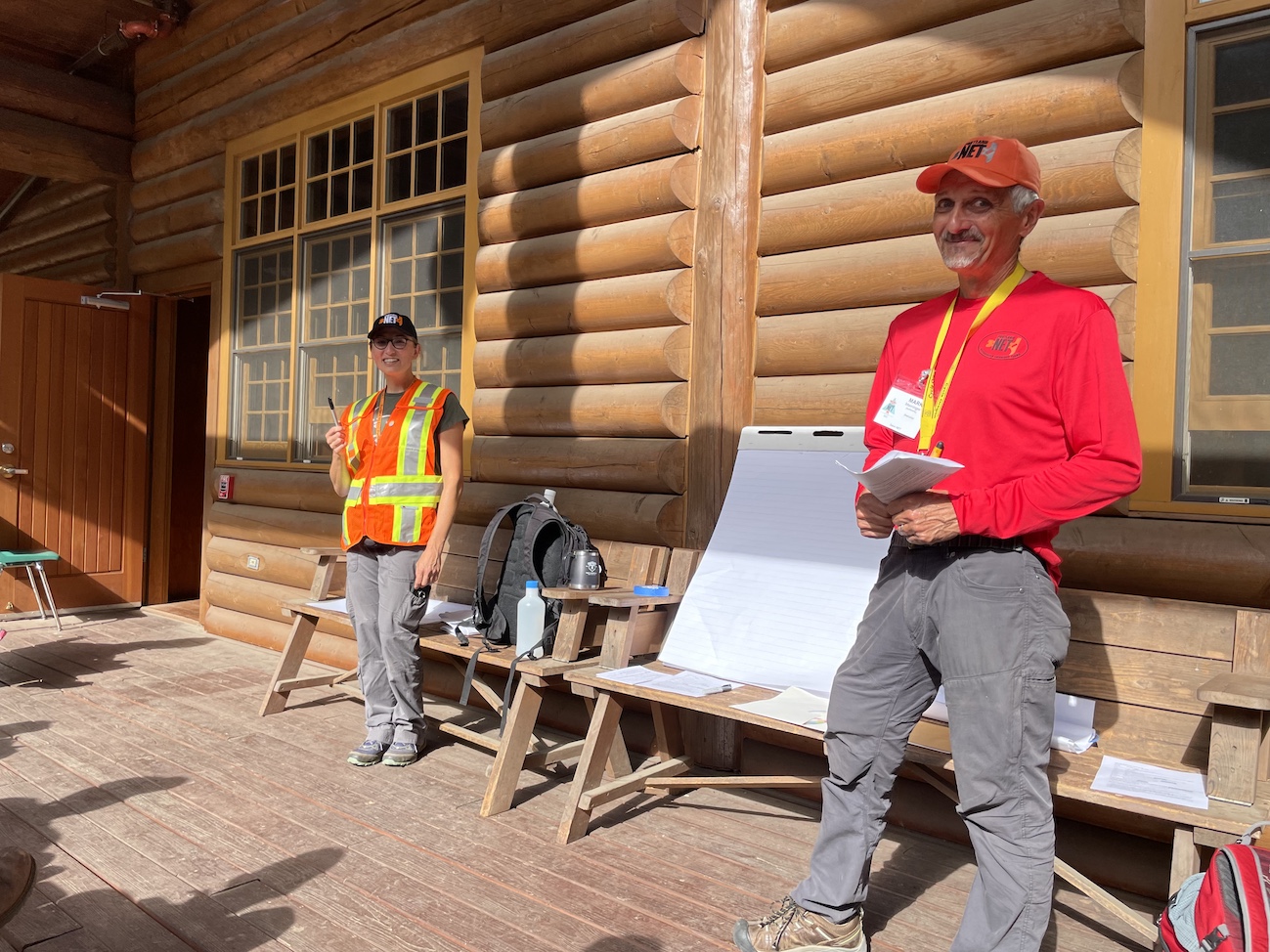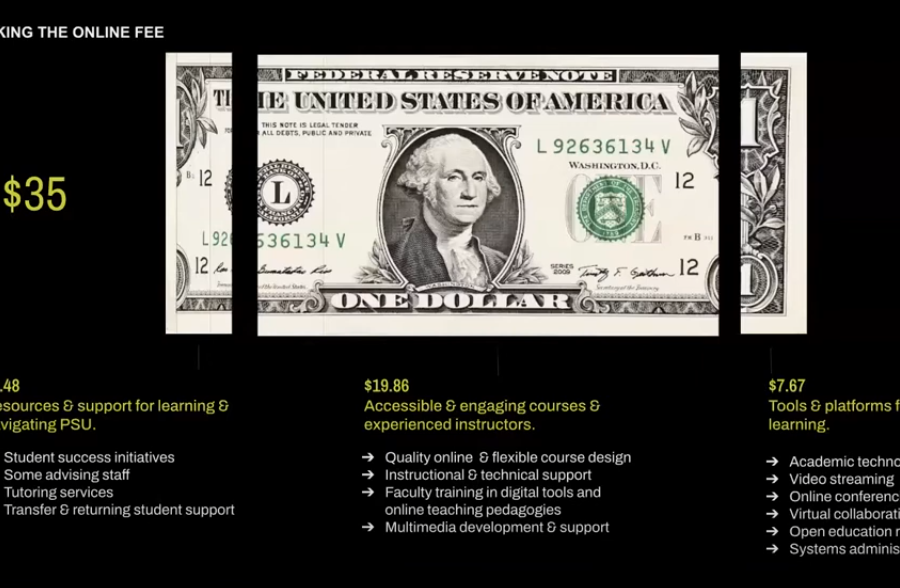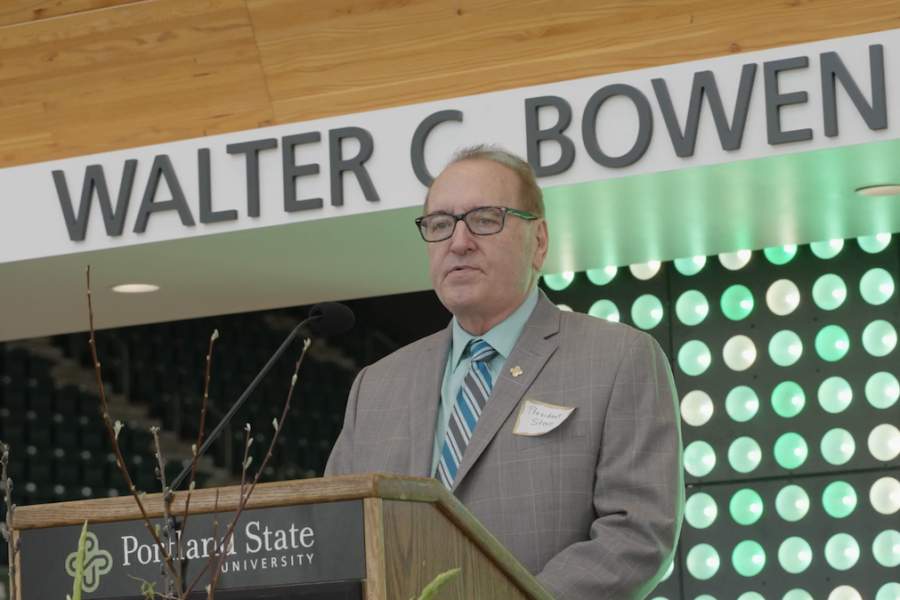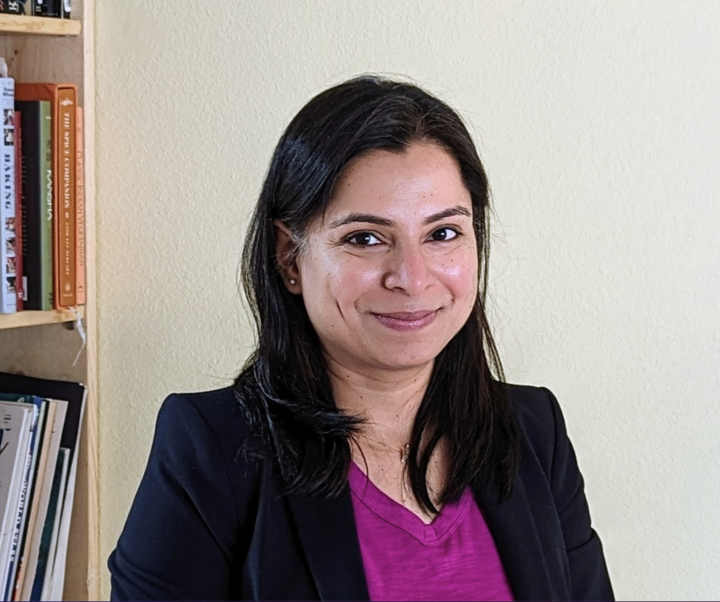The term “the Big One” commonly describes the anticipated seismic event in the Cascadia Subduction Zone, which is well-known among Portland residents. While feeling apprehensive about this future threat is natural, it might be reassuring to know that many people are actively preparing for it. Several resources and support systems are available and working to prepare for this future crisis, potentially exceeding what one might initially expect.
“It’s a daunting, frightening thing,” said Mark Meininger, the Sabin neighborhood Neighborhood Emergency Team (NET) Team Lead and Treasurer for Friends of the Portland NET. “I think one part of what I hope to get across is with just a little forethought and discussion with your friends, folks can get to a pretty comfortable ‘we can do this’ place of mental preparedness. That takes away the built-up fear that can otherwise be debilitating.”
According to a survey collected by Portland State Vanguard, 50% of respondents did not know the role of a Neighborhood Emergency Team, and 25% were unsure.
The city of Portland states that “Neighborhood Emergency Teams are Portland residents trained by PBEM [Portland Bureau of Emergency Management] and Portland Fire & Rescue to provide emergency disaster assistance within their own neighborhoods.”
In the past, NET volunteers have focused primarily on preparing for the Cascadia Subduction Zone quake by doing training and community outreach and are preparing to respond to this looming disaster.
“The one time that we can go out without explicitly being called out is in a big disaster like an earthquake that breaks communications,” Meininger said. “That’s the one time after the shaking stops—we know. Okay, we are now deployable.”
Each team is equipped with a clear plan. “Each NET neighborhood team has what we call an operations plan and the standard operations plan,” Meininger said. “The sequence is first, we make sure we are okay, and folks in our house are okay and there’s not an immediate crisis either at our house or in neighbors’ houses. And then, we go to what we call our team staging area, which is often a school, or some central place in the neighborhood.”
After coming together, the team goes to work. “We have a few tasks that we do,” Meiniger said. “One task is what we call damage assessment. So the fire bureau wants to know where there’s lots of damage or where there are big fires burning. So one role we have is to go track that and report that up the chain of command. The other [role] is search and rescue, where we tend to folks who are injured and do as best we can for where they are.”
While the training NETs go thorough is good at preparing them for the task at hand, the potential for emotional toll is high—especially for the search and rescue team, who are taught to prioritize their safety which in part means being willing to walk away from saving someone when the situation is unsafe.
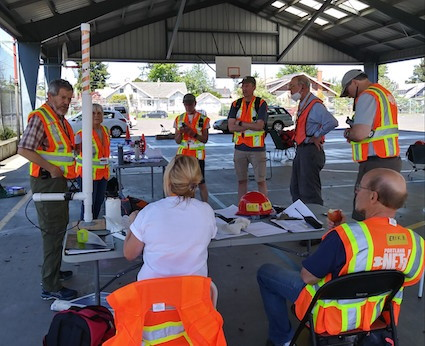
“You know, the folks who are NET volunteers are all signed up to try to help as best they can, so having to consciously not help [can be difficult],” Meiniger said. “So another path of my interest area is helping NET volunteers be aware of that coming down the pike, so it’s not such a surprise when it gets them.”
Dealing with a natural disaster can be traumatizing. Moreover, both history and the data show that minority and low-income individuals face higher risks and have a hard time recovering financially from natural disasters.
The Friends of the Portland NET, the non-profit that Meininger is a part of, tries to help balance the scales a bit. This organization seeks to be an outreach, community education tool and funds manager—and soon-to-be fundraising arm—for NETs.
“I think the NET program itself tries to equip some folks who can’t really afford to set themselves up as NET volunteers,” Meiniger said. “One of the goals of Friends of Portland NET is also to be able to provide more funding for that to increase equity across the NET program.”
Like many, COVID-19 had a lasting impact on NETs. “COVID took a toll on the NET program,” Meiniger said. “It made it difficult for teams to meet and continue building those connections. It made it difficult for folks to deploy because it didn’t even feel safe to go out to do that.”
However, there were things to learn from the pandemic as well. In many ways, it shifted the volunteers’ perspective and showed them the gaps in our community’s ability to address the crisis as a whole.
“As we were kind of shutting down, one of the guys on the task force said we are talking about what to do for something, and as he put it, will probably not happen in our lifetime,” Meiniger said. “Which with a 35% chance in 50 years for those of us in our 60s, and we have nothing for this COVID pandemic.”
The NETs have changed their focus to help with various disasters, community health and safety events. By adopting this approach, they can aid the community in the aftermath of the global pandemic and be better equipped to handle potential extreme weather incidents, among other crises that are becoming more common. It also helps them stay up-to-date on how to respond to crises and connect with people face-to-face in a meaningful way.
“What that kind of has brought about is another branch of what a lot of the NET teams have done, which is to realize the need for organizing neighbors, not just for a big earthquake, which takes storing water and all kinds of things, but also to be able to help each other in ice storms or when the heat gets bad,” Meiniger said. “To basically make the first level of outreach to be able to respond to the things we respond to now a couple of times a year. Over time we can fill back in the earthquake preparedness, but we’re going to have ice storms next winter, and we’re probably going to have heat events this summer.”
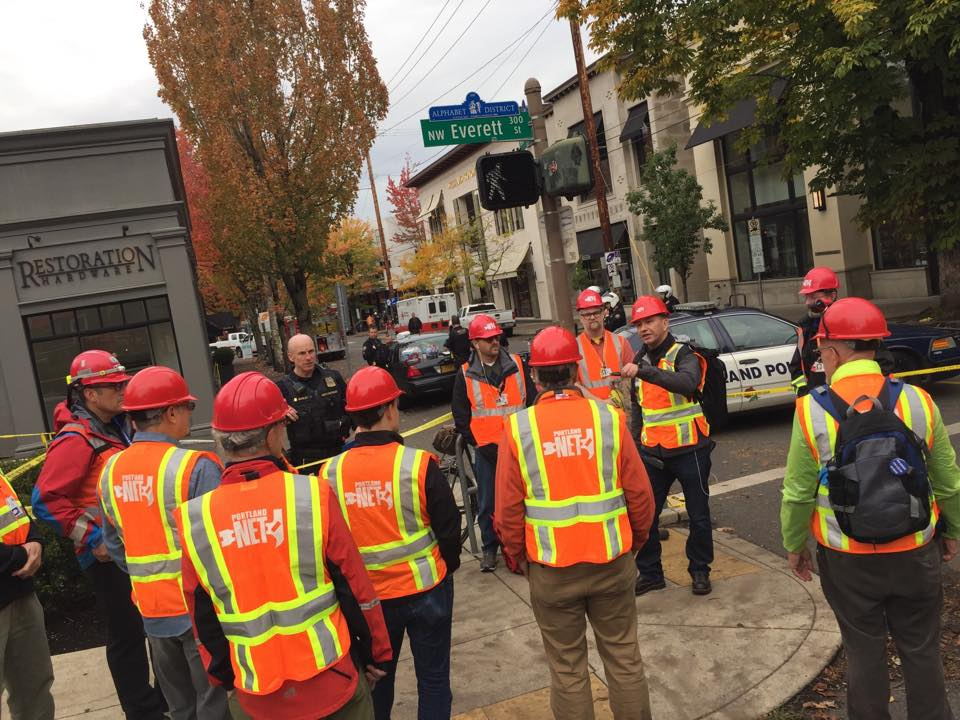
Meiniger also believed the new structure ensures better volunteer retention. “I think one thing with big disaster training, if that’s all you’re set to do, you can go years sitting around with nothing to do,” he said. “As a volunteer, it kind of saps your interest in doing that. But activating Portland NETs for everything from downed power lines to extreme weather shelters to working at the Rose Parade in first aid tents, it keeps us current in our skills and also keeps us engaged in the volunteer program.”
NETs are actively involved in community engagement efforts, aiming to empower individuals to connect with others. However, when considering neighborhoods and the community as a whole, the sheer size of these groups can be overwhelming.
However, Meiniger emphasized the importance of starting small by initiating conversations and building relationships with immediate neighbors. This approach enables people to develop a sense of familiarity with their neighbors and encourages mutual support and check-ins. In an ideal scenario, this interconnectedness works like a domino effect throughout the city and encourages connections and community as a strong bulwark against looming threats and fear.
Students are one of the most challenging groups to reach regarding community crisis planning. “Students turn out to be a pretty hard group to get organized,” Meiniger said. “We’re used to people who are living in the same house for 10 or 15 years. You guys are hard—you come and go.”
For students on top of our always-in-motion lives, many are commuters—especially here at PSU—providing us with a few different communities we interact with regularly and often semi-equally.
This provides different people the community will have to rely on in the case of a sudden emergency. “What groupings could [students] figure out that makes sense for how you all are scattered about either Southwest or whatever parts of the city?” Meiniger asked.
It starts with connecting with our community, and according to our survey, 66% of our readers that responded said they felt somewhat connected to the campus community, which is a significant first step.
However, thousands of people attend Portland State, and many might feel a different sense of community. PSU often feels like each individual has the opportunity to construct their own experience, and for those that are here and not connected, how can we reach them?
“Recognizing when somebody needs help,” Meiniger pointed out. “I think when folks get scattered as everybody is at the end of each day, when somebody doesn’t show up the next day, somebody noticing and just checking is really the very first step.”
At the same time, as students, we should be invested and aware of how our campus is preparing to face the next big crisis. According to the Vanguard survey, 46% strongly to somewhat disagreed that PSU was prepared for an impending crisis, while 33% did not agree or disagree, and 25% somewhat agreed.
“I think on campus most of the resident halls should be earthquake safe aside from the more, like, older buildings, and I live on campus, but to be honest, I’m not sure,” noted Andrea Henrickson, a PSU student.
I think that many students feel this uncertainty, and in a crisis, knowledge of who is in charge and where to go for resources and support is essential. For Portland, the NETs can provide that support. However, as a campus, we should not only work on supporting each other, but also educating ourselves on the resources available to us in all of our communities.
Be sure to keep an eye out for follow-up articles on preparedness. Future issues will explore PSU’s crisis response plan and other community resilience and crisis preparedness resources.

